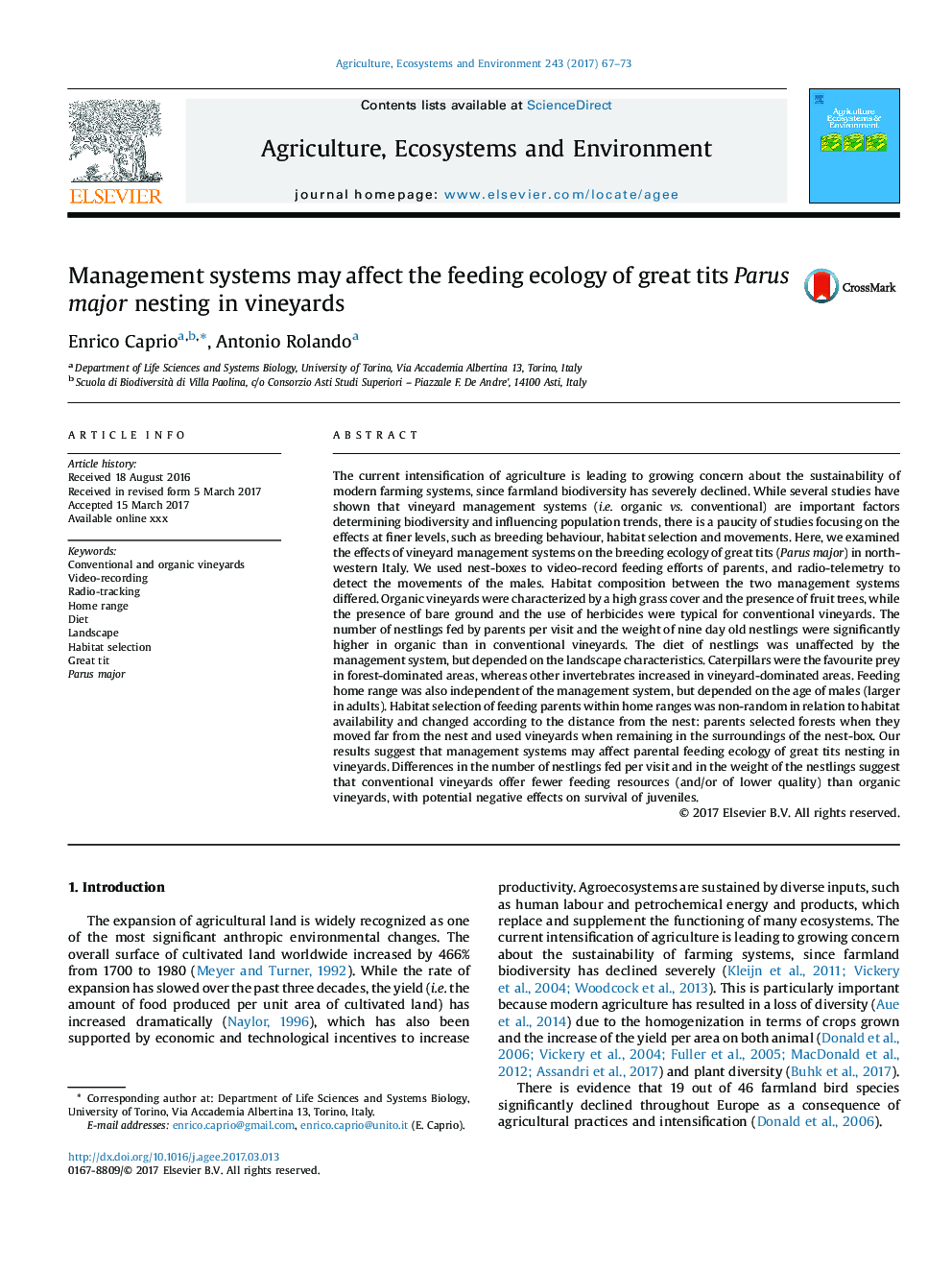| Article ID | Journal | Published Year | Pages | File Type |
|---|---|---|---|---|
| 5537829 | Agriculture, Ecosystems & Environment | 2017 | 7 Pages |
Abstract
The current intensification of agriculture is leading to growing concern about the sustainability of modern farming systems, since farmland biodiversity has severely declined. While several studies have shown that vineyard management systems (i.e. organic vs. conventional) are important factors determining biodiversity and influencing population trends, there is a paucity of studies focusing on the effects at finer levels, such as breeding behaviour, habitat selection and movements. Here, we examined the effects of vineyard management systems on the breeding ecology of great tits (Parus major) in north-western Italy. We used nest-boxes to video-record feeding efforts of parents, and radio-telemetry to detect the movements of the males. Habitat composition between the two management systems differed. Organic vineyards were characterized by a high grass cover and the presence of fruit trees, while the presence of bare ground and the use of herbicides were typical for conventional vineyards. The number of nestlings fed by parents per visit and the weight of nine day old nestlings were significantly higher in organic than in conventional vineyards. The diet of nestlings was unaffected by the management system, but depended on the landscape characteristics. Caterpillars were the favourite prey in forest-dominated areas, whereas other invertebrates increased in vineyard-dominated areas. Feeding home range was also independent of the management system, but depended on the age of males (larger in adults). Habitat selection of feeding parents within home ranges was non-random in relation to habitat availability and changed according to the distance from the nest: parents selected forests when they moved far from the nest and used vineyards when remaining in the surroundings of the nest-box. Our results suggest that management systems may affect parental feeding ecology of great tits nesting in vineyards. Differences in the number of nestlings fed per visit and in the weight of the nestlings suggest that conventional vineyards offer fewer feeding resources (and/or of lower quality) than organic vineyards, with potential negative effects on survival of juveniles.
Related Topics
Life Sciences
Agricultural and Biological Sciences
Agronomy and Crop Science
Authors
Enrico Caprio, Antonio Rolando,
